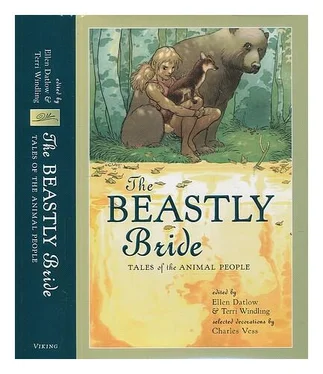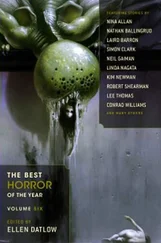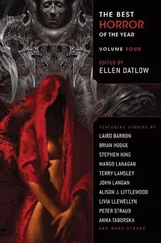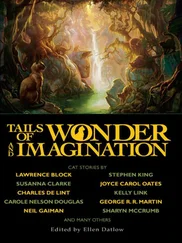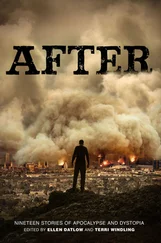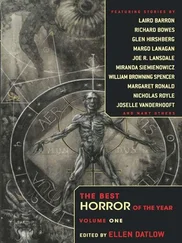“Then it escalated. She began coming in with bridal bouquets, with boxes of red carnations, huge bunches of violets. The crash pad began to look like a funeral parlor. Trebizon prowled among them, chewed the ferns, and batted the petals that fell to the floor.
“The Flower Girl started to look furtive, haunted. One time she came home with two shopping bags full of yellow daffodils. Another time it was orchids. Stuff she’d probably stolen. She’d put them on the floor around her bed, and Trebizon would lie there like it was his altar.
“Eventually the police nabbed her as she was ripping off a bank of tulips from the Macy’s garden show. With her gone, Trebizon began to notice me.”
The train arrived right then, and we didn’t get seats. I held on to a pole, and Selesta held on to me. We sang scraps of the songs from Cats . She knew a lot of the lyrics. The other passengers pretended we weren’t there.
I hoped my goddaughter would forget what we’d been talking about. Telling the story had reminded me of what it had been like to be young and confused and with no place to hide when a demon closes in.
But as soon as we hit the platform of Hoboken terminal Selesta asked, “Where was my mother when the cat came after you?”
Hoboken twenty years ago was still such a compact, old-fashioned, working-class city that in my memory it’s all black and white like an old newsreel. We walked from the station to Newark Street, where a sign in the shape of a giant hand pointed its finger at the Clam Broth House.
On the way, I told Selesta, “Right when the cat began to stalk me was when your mother appeared. Trebizon sat in the doorway of the room where I slept and stared at me. I had no other place to go and I sat on my bed, wondering what I was going to do.
“Then I looked up and there was this girl a little older than me, wearing the shortest miniskirt in the world. She put her bags in the alcove where the Flower Girl had stayed. Her name was Joan Mata. She looked taller than she was, and she had amazing eyes — green and gold like yours. Your mother had been in Europe for the summer. She and Anise had met at Columbia, and she knew Trebizon from back then.
“I didn’t even have to tell her what was happening. She gave one look at Trebizon, and he ran and hid in the kitchen.”
What Joan had actually done was let out a low growl. Trebizon’s reaction was like that of the cobbler’s cat and the deli cat when Mimi was carried past. His nose and ears twitched; he looked around, scared and confused, like he sensed a cat but couldn’t see one.
Trebizon never came back out of that kitchen. Anise knew something was wrong, but she and the cat were both a bit afraid of Joan.
“Why didn’t Trebizon make my mother allergic?” Selesta asked suddenly.
Before I could think of a reply, a voice said, “The allergies developed later, honey.” Joan Mata stood smiling at the front entrance of the sprawling block-long maze of dining rooms that was the Clam Broth House.
Joan was a designer. She was married to Selesta’s father, the architect Frank Gallen. He was out of town. Their town house was like a showcase for his work and hers. Some part of it was always being rebuilt or redesigned. That week it was the kitchen.
So we ate at the restaurant, which Selesta always loved. The three of us were seated. When Joan put on her glasses to glance at a menu, they seemed to alight on her face for a moment. Like a butterfly.
Selesta recounted scenes from the musical and chunks of our conversation. “And he said he was a hippie, but he didn’t know if you were.”
“Your godfather has it backward,” said Joan. “Everything I owned was in those suitcases. He had a job. It was so cute, every morning in that madhouse, he’d put on his suit and tie and go off to write fashion copy.”
Selesta asked, “What happened to Trebizon?”
Neither of us knew. “I imagine he had a few lives left,” Joan said.
Selesta left us briefly, reluctantly for the ladies’ room, knowing that in her absence secrets would be discussed.
“She asked and I told her a little bit about Trebizon and East Tenth Street.”
“That’s perfect. She’s getting curious, and I’m glad it happened like this and with you.”
“Shouldn’t you tell her about your father?”
She sighed. “She’ll ask and I’ll tell her.”
Over twenty years before, we had known we’d be friends from the moment we met. In late night conversations on the front steps and back fire escape on East Tenth Street, we talked about sex and drugs and parents and trauma.
Joan sat on railings and never lost her balance. She was only a year or two older than I was but knew so much more. Her mother was a well-known lawyer; her father was Antonio Mata, the Mexican painter who did surrealistic paintings that looked like cartoons and who signed himself “Margay.”
That night, for the first time, I questioned her judgment, but said nothing.
PART TWO
About ten years later, when Selesta was in her late teens, a sophomore studying theater at NYU, there was a Friday afternoon when she drove us both out to Long Island. We were going to spend the weekend with her mother and grandmother in the House That Ate the World. It was early June, and the Island was radiant.
That uncanny light you get on that thin, low strip of land on a long afternoon is sunlight reflected off the Atlantic and Long Island Sound.
Selesta was slim but not as painfully thin as she had been a few years before, when her parents divorced and she became bulimic. She had been cured of that, and in high school had lived a tightly scheduled life the point of which, maybe, was to prevent her pondering too much about who she was.
A couple of times over the years, though, we’d talked about her mother and our adventures when we first met. I’d run through my stories of Joan and me dancing at Ondine with Hendrix in the house and talking to Allen Ginsberg in Tompkins Square Park. All the baggage of the tiresomely hip older generation got trotted out.
That day, though, she asked, “You know about ocelots?” I nodded and had a good idea where the conversation was going.
“They’re small; their bodies are a couple of feet long and with a tail almost that long. They have beautiful coats,” she said. “They live all through South America and Mexico. Whenever I go anywhere if they have a zoo I check and see if they have ocelots. San Diego does and Cincinnati.
“Ocelots are shy,” she added. “And, of course, they’re getting scarce because of their fur and the forest disappearing.
“Obviously, though, what I’m really interested in is the margay, a kind of cousin with the same markings. You know about them.”
“They live and hunt in trees,” I said. “They’re nocturnal, very, very shy, and getting rare.”
“You know that because my mother talked to you about this, didn’t she? Back when you were kids. She knew about all this, about her father. You know Margay was his nickname? I first got interested in them when I was about twelve and heard about Grandfather Margay from Grandma Ruth.
“Ruth took me to Mexico last summer. We went to the town where Antonio Mata was born and grew up. There were still people who knew him. We made a special visit to Belize because of this amazing zoo they have. It’s away from the coast with lots of space. More like a nature park with all animals from Central America,” she said.
“I waited outside the margay enclosure, and at dusk I saw one on a high tree branch. Its eyes reflected the light. Other people were there, but it looked at me. Then it was gone.”
As we rolled along the flat prairie that is the Island’s center, late afternoon sunlight made long shadows and gave a kind of magic to the endless strip malls, the buildings with signboards listing dermatologists’ and dentists’ offices, the used-car lots.
Читать дальше
